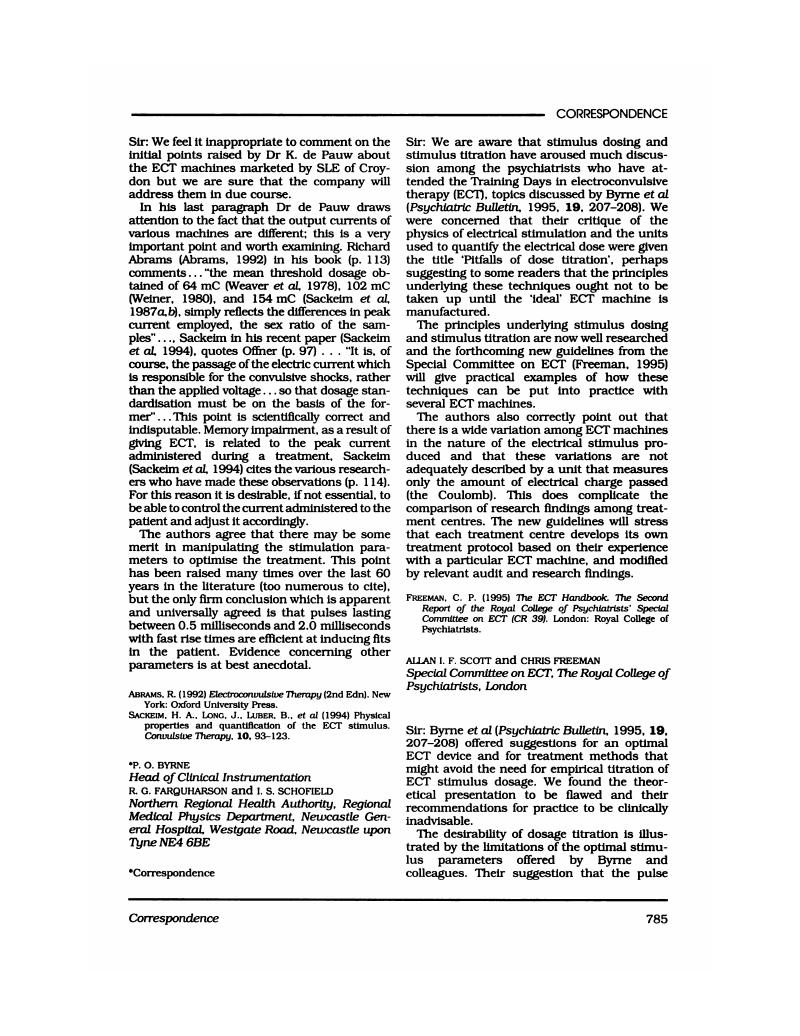No CrossRef data available.
Article contents
[No title]
Published online by Cambridge University Press: 02 January 2018
Abstract
An abstract is not available for this content so a preview has been provided. As you have access to this content, a full PDF is available via the ‘Save PDF’ action button.

- Type
- Correspondence
- Information
- Creative Commons
- This is an Open Access article, distributed under the terms of the Creative Commons Attribution (CC-BY) license (http://creativecommons.org/licenses/by/4.0/), which permits unrestricted re-use, distribution, and reproduction in any medium, provided the original work is properly cited.
- Copyright
- Copyright © Royal College of Psychiatrists, 1995
References
Sackeim, H. A., Prudic, J., Devanand, D. P., et al (1993) Effects of stimulus intensity and electrode placement on the efficacy and cognitive effects of electroconvulsive therapy. New England Journal of Medicine, 328, 839–846.Google Scholar
Sackeim, H. A., Prudic, J., Long, J., Luber, B., et al (1994) Physical properties and quantification of the ECT stimulus: I. Basic principles. Convulsive Therapy, 10, 93–123.Google Scholar



eLetters
No eLetters have been published for this article.